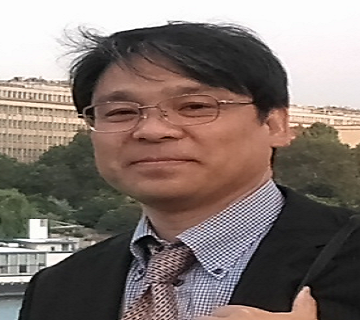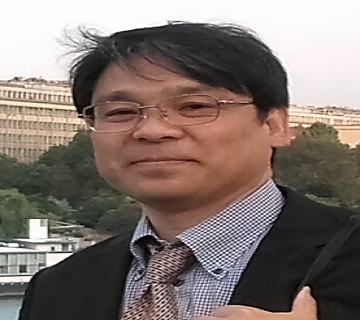Scientific Program
Keynote Session:
Title: Taste as a tool: The mouthfeel model
Biography:
Peter Klosse has over thirty years of experience in gastronomy. He is active as an entrepreneur and as an academic. He owns five star Hotel and Restaurant De Echoput, near Apeldoorn and the Academie voor Gastronomie, a training institute for chefs and sommeliers. As an academic, he developed a new flavor theory, which evolved in a PhD. He is the Professor of Gastronomy and researches and teaches gastronomy at the Hotel Management School Maastricht. Recently he founded T.A.S.T.E. to initiate the measurement of taste. Peter Klosse is member of the Google Food Lab and a number of advisory boards.
Abstract:
Tasting usually refers to neural systems that register taste. The “basic taste proposition” is a relatively subjective concept, as the subject (usually human) does the tasting. We propose to focus on the product side that can be assessed more objectively. Food and beverages comprise a particular configuration of water, proteins, fats and carbohydrates: or rather a composition of molecules that we know much about and that can be measured and quantified. Acidity, bitter, salts, sweet and umami impact taste. Although all these aspects taste very different, but they also have something in common: they all have some kind of ‘mouthfeel’. We distinguish ‘contracting’, ‘coating’ and ‘drying’ as three classes of mouthfeel. These classes have different intensities. Ingredients within the same group are likely to enhance its intensity. Between classes there is likely to be suppression, or masking. Mouthfeel and intensity are the parameters of a model that can be used to classify foods and beverages. This classification can be used i.e. in food and beverage pairing and the composition and improvement of dishes. We aim to progress in quantifying the model and measuring mouthfeel as a primary indicator. Ultimately, each food and beverage should find a coordinate that defines its mouthfeel. This approach is supposed to give better insights in liking as taste becomes a tool to connect foods and beverages to the preferences of people. In our keynote and workshop we’d like to explain and illustrate this innovative and invigorative approach. It would be premiere.
Title: Nutraceutical application in integrative cancer treatment and prevention
Biography:
Simon Hsia is currently the CEO of NH Nutraceutical Inc., the president of DoWell Laboratories Inc., and the honorary Chairman of Taiwan Nutraceutical Association. He had over 30 years of major corporate experience in product research and development with expertise in dietary supplements, nutraceutical products, OTC drugs, skin care, and etc. He holds 14 US patents related to nutraceutical formulations and raw material process. He published a book titled Nutraceutical Mystic Glamour in 2008. He is the project leader for numerous clinical studies and he has published more than 20 papers in reputed journals.
Abstract:
Total nutrition support plays a crucial role in Complementary and Alternative Medicine now as demonstrated by the growing number of published papers on the subject. Tumor-induced metabolic changes quickly compromise nutritional status resulting in cancer cachexia, poor response to treatment, and a decreased quality of life. In our studies, we found our special nutraceutiacal formula has synergistic effects with cancer drugs on suppression of immune suppressor markers, down-regulating inflammatory mediators as opposed to increase of anti-tumor immunity, leading to inhibit tumor growth and attenuate cachectic symptoms. Moreover, our formula can prevent GI damage caused by cancer treatment and also prevent metastases by significantly reduce the level of VEGF, and has a strong apoptotic effect on tumor cells. Properties of cancer stem cells are involved in drug resistance, and the relapse of cancer which can significantly affect tumor therapy. Our latest research has shown that nutraceutical intervention can induce cancer stem cell suicide and inhibit its “stemness” properties including self-renewal, differentiation and proliferative potential.; moreover, can have the same therapeutic effect as the latest immunotherapy which targets PD-L1 and boosts the immune response against cancer cells, but without side effects. This stunning new discovery means nutraceutical intervention belong in the front line of the battle for cancer treatment.
Title: Selective adsorption of 1, 3-dimethyltrisulfane (DMTS) responsible for aged odour in Japanese sake using supported gold nanoparticles
Biography:
M Tokunaga graduated from Department of Chemistry, Nagoya University and received his PhD in 1995 on asymmetric hydrogenation under the supervision of Prof. Noyori. He carried out post-doctoral work at Harvard University (1995-97), and RIKEN institute (1997-01) then was appointed an Associate Professor at Hokkaido University in 2001 and professor at Kyushu University in 2006. His original research field is homogeneous catalysis and organic synthesis. He has expanded his field into heterogeneous catalysis and nanomaterials and developing novel applications, one of which is adsorptive desulfurization from beverages, especially from Japanese sake.
Abstract:
Japanese sake contains many kinds of volatile molecules, including esters, alcohols, acids, and sulfur compounds. The control of flavour is one of the important issues for sake brewing. The major methodologies currently used concerns brewing process techniques and biotechnological approaches. We introduce a method using supported gold nanoparticles for selective removal of aged off-flavor of Japanese sake by collaboration with sake- and catalysis researchers. During the storages of Japanese sake, an aged odor often emerges, which is so-called hineka in Japanese. Dr. Isogai, one of the authors, disclosed that 1,3-dimethyltrisulfane (DMTS) is responsible for the smell. Traditionally, activated carbon has been used to reduce that but the carbon also decreases fruity flavour, so-called ginjoka, which arises from esters such as ethyl hexanoate. We demonstrate here, supported gold nanoparticles effectively adsorb DMTS without the detracting from its fruity aroma both in model solutions and real Japanese sake samples. The silica supported gold nanoparticles (Au/SiO2) were prepared by impregnation using Au–amino acid complexes as precursors. Adsorptive desulfurization using a model solution containing 4.7 mg L-1 of DMTS in ethanol elucidated that smaller size of Au exhibited higher rate and equilibrium of adsorption. Langmuir-type monolayer adsorption is expected based on an adsorption isotherm experiment. Then adsorptive desulfurization was carried out with several kinds of aged odor emerged-Japanese sake samples. A sample (daiginjo) contains 0.67 µg L-1 of DMTS for control, but was decreased to 0.29 µg L-1 with activated carbon and 0.10 µg L-1 with Au/SiO2. On the other hand, ethyl hexanoate reduced to half with activated carbon but remained intact with Au/SiO2. Sensory evaluation well reflected the results of the instrumental analyses.
Oral Session 1:
- Food Preservation | Food Nanotechnology | Food and Nutrition | Food Processing

Chair
Simon Hsia
CEO, DoWell Laboratories Inc, USA

Co-Chair
Makoto Tokunaga
Professor, Kyushu university, Japan
Title: Nutraceutical application in integrative cancer treatment and prevention
Biography:
Simon Hsia is currently the CEO of NH Nutraceutical Inc., the president of DoWell Laboratories Inc., and the honorary Chairman of Taiwan Nutraceutical Association. He had over 30 years of major corporate experience in product research and development with expertise in dietary supplements, nutraceutical products, OTC drugs, skin care, and etc. He holds 14 US patents related to nutraceutical formulations and raw material process. He published a book titled Nutraceutical Mystic Glamour in 2008. He is the project leader for numerous clinical studies and he has published more than 20 papers in reputed journals.
Abstract:
Total nutrition support plays a crucial role in Complementary and Alternative Medicine now as demonstrated by the growing number of published papers on the subject. Tumor-induced metabolic changes quickly compromise nutritional status resulting in cancer cachexia, poor response to treatment, and a decreased quality of life. In our studies, we found our special nutraceutiacal formula has synergistic effects with cancer drugs on suppression of immune suppressor markers, down-regulating inflammatory mediators as opposed to increase of anti-tumor immunity, leading to inhibit tumor growth and attenuate cachectic symptoms. Moreover, our formula can prevent GI damage caused by cancer treatment and also prevent metastases by significantly reduce the level of VEGF, and has a strong apoptotic effect on tumor cells. Properties of cancer stem cells are involved in drug resistance, and the relapse of cancer which can significantly affect tumor therapy. Our latest research has shown that nutraceutical intervention can induce cancer stem cell suicide and inhibit its “stemness” properties including self-renewal, differentiation and proliferative potential.; moreover, can have the same therapeutic effect as the latest immunotherapy which targets PD-L1 and boosts the immune response against cancer cells, but without side effects. This stunning new discovery means nutraceutical intervention belong in the front line of the battle for cancer treatment.
Title: A novel technology for production of a new stable product of treacle and tahini mixture with acceptable organoleptic properties
Biography:
Magdy M. El Sayed obtained his PhD from Faculty of Agriculture, AinShams University and currently resides as an emeritus professor at National Research Center, Egypt. He was the head of Food Industries and Nutrition Research Division at NRC. He was the PI of 4 projects and also the chairman of 3international conferences. He published more than 50 papers in reputable journals and one patent. He signed many protocols of cooperation, consulting and agreements with industrial district. He was honored the “Unilever Mashreq” award in 2013 and “Unilever Mashreq” recognition for the best research paper in 2014.
Abstract:
Treacle and tahini are well-known traditional food products in Egypt. Treacle (black honey) is prepared by direct heat evaporation and concentration of sugar cane juice. Treacle is prescribed for anemia patients as a source of iron (approximately 6%). Due to its high sugar content, treacle solidifies over time because of sugar crystallization. Sesame seeds are the oldest condiment known to man that provides high energy and prevents ageing. It possesses antioxidative, anticancer and anti-immunoregulatory actions. The seeds are used for the production of sesame oil and paste (tahini).
Title: Production and utilization scenario of apple pomace
Biography:
F.A. Masoodi is currently Dean School of Applied Sciences & Technology besides heading the Department of Food Science and Technology at the University of Kashmir, J&K, India. He obtained his higher education in Food Technology from some reputed agricultural institutes of India, which include GBPUAT, Pantnagar & PAU, India. He remained associated with four universities of India as faculty member and played a pioneering role in establishing departments of Food Technology at University of Kashmir (India) and CCSHAU, Hisar Haryana (India). He has supervised eight PhD scholars so far besides guiding many students for their post graduate dissertations. He has published around 170 research articles besides 4 book chapters. His research work has earned him more than 1900 citations with h-index and i-10 index of 24 and 58, respectively. He has done a pioneering work on utilization of apple pomace, a byproduct of apple processing industry. He has attended and delivered lectures in numerous conferences and seminars. He also holds the membership of various boards, viz: National Assessment and Accreditation Council (NAAC), Indian Council of Medical Research (ICMR) working group on micronutrients, Research Advisory Committee of National Dairy Research Institute (NDRI) Karnal and National Agri-food Biotechnological Institute of India (NABI), to mention a few. Besides, he has been the member of Expert Panel on Food Additives, Food Safety and Standards Authority of India (FSSAI), Ministry of Health, Govt. of India.
Abstract:
With an estimated production of 78.7 million metric tons in 2016/17, apple constitutes a major source of fruit globally. About 11.3 million metric tons are processed, in which the major share is contributed by juice production. Apple processing generates huge quantities of wastes in the form of skin, seeds and pulp, collectively referred to as apple pomace. This waste comprises about 20-30% of the initial apple weight, pointing towards the accumulation of a huge environmental burden. In 2010 alone, the global apple pomace production was expected to cross the mark of 3600 thousand tons. In India, total production of apple pomace is estimated to be about 1 million tons per annum. Compared to the global utilization of (25%-30%) of apple pomace, no commercial usage is found in India. Processing plants located in the states of Jammu and Kashmir, and Himachal Pradesh, produce huge quantum of apple pomace which is not being utilized at present but is dumped in the fields as such. Apple pomace forms a base raw material for biofuel and biorefinery chemical production including phenolic compounds, pectin and fibre, organic acids, ethanol and enzymes, aroma compounds, natural antioxidants, biopolymers and pigments. Valorization of apple pomace for obtaining such compounds could therefore serve to lessen the environmental impact of the accumulated waste, and also to bring economic benefits. Attempts targeted at utilizing this waste as a source of dietary fiber, food, animal feed and biofuels have been carried by numerous researchers. Apple pomace could therefore be valorized, however requiring foremost consideration at this front.
Title: Risk management: Humidity and temperature control of nutmeg supply chain to ensure Food safety
Biography:
Sri Bintang Kusumo Winahyu has her expertise in controlling of Mycotoxin contamination of Nutmeg during supply chain. Her controlling model based on Analyse mycotoxin contamination at nutmeg supply chain, consist of harvesting, postharvest treatment, treatment at collecting House, Treatment at Exporter ware house, and Treatment a during transportation to EU Country. She has built this model after years of experience in treatment of Nutmeg notification during the implementation of new regulation in EU Country for Importing Nutmeg from Indonesia. The foundation is based on Mycotoxin is a metabolite of mold, in this case Aspergillus flavus. This mold can be growth during cultivation, harvest, post-harvest and also during treatment in collecting House, Exporter ware House and also during transportation to country in this case EU Country as Export destination.
Abstract:
Nutmeg is an herb product that produces in Indonesia, especially eastern Indonesia such as Banda Island (Maluku region), Fakfak West Papua and Siaw island North Celebes. Most of EU people like very much nutmeg from Indonesia. Till now, Indonesia meets about 80 % of the needs of EU for nutmeg. Nutmeg produce by view country. Another country that produces nutmeg is India and Ceylon. But quality of nutmeg from India and Ceylon origin not as good as Indonesian Nutmeg. EU Community use nutmeg in almost all their food, such as sausage, tea and other kind of their food. There are two requirements of Nutmeg export to EU Country: contain Aflatoxyn B1 ≤ 5 ppb (EU regulation No.24 / 216 and Ochratoxyn ≤ 15 ppb (EUregulation 1881/2006). A long 2016, there are 25 notification of Indonesian Nutmeg, caused are: Aflatoxin contamination ( more than 5 ppb of Aflatoxin B1 or 10 ppb of total aflatoxin) it’s about 10 shipment, Ochratoxin contamination (more than 15 ppb Ochratoxin A) 2 shipment, Live insect contamination (requirements is a no live insect), Without Health Certificate from Indonesia Competent Authority. Notification In case of contamination of aflatoxin and ochratoxin, these products has been declared safe, with publication of Health Certificate from Indonesian Competent Authority. Based on this fact, aflatoxin and ochratoxin, may appear during shipment from Indonesia to EU Country. Aflatoxin is an toxin that produced by fungi, Aspergillus flavus. Ochratoxin is a toxin produced by Aspergillus ochraceus. In Human, consumption of food with aflatoxin contamination can be caused hepato carsinigenic. In the other side, consumption of food with contamination of ochratoxin can be caused hepato toxin. Not only hepato carsinogen but also hepato toxin, is a long term hazard. According nature of Aspergillus flavus and Aspergillus ochraceus will be produced mycotoxin if Aspergillus sp is threatened with life and in a tense state. To avoid aflatoxin and ochratoxin, we should be avoid mold growth, such as Aspergillus flavus and Aspergillus ochraceus. When aspergillus is detected in nutmeg, environmental conditions must be maintained so as not to threaten life aspergillus but also does not make aspergillus multiply rapidly. Humidity and temperature is the key to growth Aspergillus flavus and Aspergillus ochraceus. Humidity should be controlled not only raw material but also along the supply chain. In the other side, temperature should be control to ensure hygienic sanitation requirement in place, to avoid another contamination such as microbe contamination.
Title: Physiological Nutraceuticals: the rule of 3Rs as an innovative approach to nutrition and health
Biography:
Barbara Aghina is a Biologist; after taking her Master degree in Molecular Biology, she has dedicated her life to the study of Nutrition and the development of new nutraceutical solutions. She is part of the Scientific Department of Guna Pharmaceuticals (Milan) where she is involved in research projects and in the divulgation of Physiological Nutraceuticals principles through educational activities (lectures, congresses, round tabales) addressed to doctors, pharmacists, nutritionists.
Abstract:
“Physiological Nutraceuticals” is one of the most modern and innovative expression of Nutritional Science. It is based on the principles of human physiology and developed following the most recent discovers in the field of Molecular Biology and in the P.N.E.I. (Psyco- Neuro- Endocrine-Immunology) domain. The goal of Physiological Nutraceuticals is to help the body to restore its physiological condition and maintain it at its best through a correct nutrition, a healthy life style and the use of specifically designed dietary supplements in order to interact with metabolic functions and maintain body homeostasis.
Guna Physiological Nutraceuticals dietary supplements are the expression of this nutraceutical philosophy: designed as multicomponent products, they combine plant-based extracts, pro- and prebiotics, minerals, vitamins and many other components in a perfectly balanced ratio.
Starting from the centrality of the gut and its primary role in the onset of several diseases, Physiological Nutraceuticals postulated the Rule of the “3Rs”: it represents the most simple and physiological way to guarantee the intestinal health, through the following linked and sequential acts: Rebalance (the pH)-Repair (the gut mucosa)-Replace (the microbiota).
Keynote Session:
Title: Functional food between nutritional value and hormonal influences
Biography:
Ahmed O Shalaby is the Vice Dean of Faculty of Tourism and Hotels of Education and Student Affairs since 2016. He is the former Professor of nutrition and food science, Home Economic Department, Faculty of specific education, Mansoura University from 2003 -2008. He is the Professor of food science, Home Economic Department, Faculty of specific education, Mansoura University since 2008. He is member of Supreme Managerial Committee for quality assurance project since 2009 and Head of Home Economics and small industries unit in General Service Center for educational and technical service since 2005. He is the former Director of Faculty of Specific Education 2009 to 2010. He is also the former Director of Faculty of Specific Education from 2012 to 2013 and Head of department of Hotel Studies, Faculty of Tourism and Hotels 2014 to 2015. He is the Member of board of directors of open education - Faculty of Tourism and Hotels since 2014.
Abstract:
Functional foods are foods that have a potentially positive effect on health beyond basic nutrition. Proponents of functional foods say they promote optimal health and help reduce the risk of disease. Functional foods range from cereals and bars enriched with folic acid to your average tomato or cup of green tea, while nutraceuticals are more commonly sold in pill form. The level of consumption of the food that is required to achieve a beneficial effect on health is an important consideration. In particular, it should be possible to achieve the required level of intake of the functional food or ingredient within normal dietary patterns. Often, a food is termed functional because it contains a high amount of phytochemicals. These natural, active plant chemicals have been found to boost health. Phytochemicals are plentiful in fruits, vegetables, whole grains, soy foods, and many herbs and spices (parsley, chives, garlic and ginger). The presence of antioxidants in a food is another reason it can be termed “functional”. Antioxidants, such as vitamins A, C, E, and the mineral selenium, work to destroy harmful particles in the blood that can lead to heart problems and other complications. Examples of foods with antioxidants include tea (catechins), wine or grape juice (resveratrol), berries (flavonoids such as quercetin), and maple syrup and citrus foods (flavonoids/limonoids). Functional foods may provide benefits in health terms, but should not be seen as an alternative to a varied and balanced diet and a healthy lifestyle. In order to maximize health and wellbeing, Functional foods do not provide a miracle solution to health problems but may be useful to some people as part of a healthy diet and lifestyle. Examples of functional foods that have hormonal effects, especially on sex hormones, are maple syrup, where it was found to be the administration of fortified meal with maple syrup (especially, at higher concentration 20 ml followed 10 ml) improved the primarily at the sperm parameters, hormones parameters level and activities of antioxidant enzymes that may be due to effect of sodium valproate on endocrine function in male rats. The high amount of phenolic and flavonoid compounds is likely to be responsible for the higher antioxidant activity of the maple syrup.
Title: G.I.T Immunology
Biography:
Jean has studied Clinical Biology from 1976 to1982 and had his acquisition of own pharmacy which is open to the public. Jean is specialized in herbal medicine and aromatherapy. And teaches for non-profit in Meliphyt and also opened his own consultation in micro nutrition.
Abstract:
We will first of all start with a histolocal reminder of the membrane of the G.I.T and its constituents. Then we will discuss the G.I.T as an immunological barrier = the G.A.L.T. We will then pass onto the consequences of civilization diseases( intolerences,allergies,M.I.C …..) next we will talk about the immune response, the differentiation of lymphocytes, the secretion of IgA, Autoimmune diseases, the interest of prebiotics and probiotics, the relationship which exists between the Probiotics and the immunity. And for the conclusion: « Capital importance of the proper functioning of the G.I.T for the wellbeing of our patients.
Title: Hybrid polymer materials for oxygen barrier and scavenging food packaging
Biography:
Xu LI is a Senior Scientist at Institute of Materials Research and Engineering (IMRE), Agency for Science, Technology and Research (A*STAR), Singapore. He finished his PhD study in polymer chemistry in the Department of Chemistry, National University of Singapore in 2001. He is an adjunct Associate Professor of the Department of Chemistry, National University of Singapore from 2012. He has published more than 100 research papers and filed 15 international patents. Some of those patented technologies were successfully adopted by industry companies. As a principle investigator, he is now leading a research team on polymeric materials development for various applications, including controlled release, bio imaging, energy storage and food packaging.
Abstract:
The main purpose of packaging is to protect the packed products from the contamination, maintain the high quality level of the products over sufficient period during the distribution, storage, sale, and use. Products especially perishable foods are highly sensitive to oxygen. However, conventional transparent plastic films have poor oxygen barrier property and the technologies in the market to improve packaging’s oxygen barrier usually lead to high equipment investment, high energy consumption, and low transparency. To overcome this issue, two technologies have been developed by our group. For the first transparent oxygen-barrier packaging technology, natural source silicates have been successfully introduced into polymer layer to create torturous path of oxygen molecules to enhance its barrier against oxygen. The key technology here is to align all the plate-like silicate filler in one orientation. As shown in the cross-section view of the oxygen-barrier coating on polyethylene terephthalate (PET) film through scanning electron microscope (SEM) and transmission electron microscopy (TEM), the plate-like silicate filler form a compact layer with high orientation on the PET film, which is simply implemented via standard doctor-blade coating process (Figure 1). With this technology, transparent polymer films with oxygen transmission rate less than 0.5 cc/m2.day have been achieved. With the second technology, iron-based nanomaterials with high oxygen scavenging property have been developed and integrated into coating suspension to form transparent coating on plastic film. Such transparent coated films can achieve oxygen scavenging capacity about 8.8 cc/100 cm2 and the transparency is not compromised much.
Oral Session 1:
- Nutraceuticals for Cardiovascular Health | Functional Foods | Dietary Supplements | Recent Trend in Nutraceuticals Research

Chair
Simon Hsia
CEO, DoWell Laboratories Inc, USA

Co-Chair
Makoto Tokunaga
Professor, Kyushu university, Japan
Title: Effects of feeding schedule on time to reach full feeds in neonates weighing 500 to 1500 grams: A randomized trial
Biography:
Showkat Hussain Tali has obtained Bachelor's degree in 2005 and MD in Pediatric Medicine from University of Kashmir in 2010. In 2013, he joined Department of neonatology Surya Children’s Hospital Mumbai and became Board Certified in neonatology from the National Board of India in 2015. In November 2016, he joined Adesh University, Punjab as Assistant Professor Pediatrics and in charge Neonatology. At present he is working as assistant professor at Govt Medical College Anantnag, J and K India. He has more than 2 dozen publications in national and international journals. He has received science talent search award from the Govt. of Jammu and Kashmir in 1997 and was awarded by Help Foundation and Raju Gandhi foundation, India, for excellence in creative writing in 2006. In 2017 he was awarded official spot light certificate at New Delhi for my overall achievements. He has presented my research work in 3 international conferences across the world (Czech Republic, Prague; Los Angeles, USA; Dubai, UAE) in 2017. Also he Co-Chaired a scientific session and was the moderator of 14th world pediatric and neonatal Care Conference Los Angeles, California, USA. He has been the key note speaker and presented two papers related to infant and neonatal nutrition in international conference “Advances in Neonatal and Pediatric Nutrition”, at London, UK, 2018. He also Co-chaired a session with Professor Alexander Oleskein, Moscow state University, Russia at the same conference. He is an editorial board member of archives of pediatrics and neonatology, an international journal published from USA.
Abstract:
Aim: To compare the effect of 3-hourly (3-h) versus 2-hourly (2-h) feeding schedules on time to reach full feeds in neonates weighing less than 1500 grams.
Materials and Methods: This was a randomized trial conducted in a level 3 neonatal intensive care unit, Surya Children’s Hospital Mumbai, India. We enrolled 120 preterm neonates with birth weights of 501 to 1500 g. The neonates were divided into 2 strata based on birth weight: 501 to 1000 g and 1001 to 1500 g. The neonates were randomized into 2 orogastric feeding schedules: 8 or 12 feeds (3-h or 2-h schedules, depending upon randomization), and a uniform feeding protocol was followed. Analysis was performed using the intention-to-treat principle. Categorical variables were compared using the Chi-square test. Continuous measures between groups were compared using 2-sample t test or Mann Whitney U test as appropriate. Data were analyzed using IBM SPSS version 21 software. P <0.05 was considered significant. Primary outcome measures were time (in days) to reach full feeds (defined as tolerance of 150 mL/kg/d of feeds for at least 48 h). Secondary outcome measures were time (in days) to attain birth weight; time (in days) to discharge; weight, length, and head circumference at discharge; incidence of feed intolerance, necrotizing enterocolitis (NEC), Intravascular hemorrhage (IVH), screen-positive sepsis, culture-positive sepsis, hypoglycemia, apnea, jaundice and retinopathy of prematurity (ROP), duration of total parental nutrition (TPN) and nursing; and mortality.
Results: A total of 215 neonates were assessed for eligibility, of which 95 were excluded. Hence, 120 neonates were enrolled in the trial. There was no significant difference in time (in days) to reach full feeds in the 2-h versus 3-h groups (9.53 ± 4.26 v/s 9.85 ± 5.48; P = 0.73). There was no significant difference between the 2 groups in most of the secondary outcomes. However the total time spent per day in feeding was significantly lesser in the 3-h feeding schedule group (P = 0.04). Subgroup analysis revealed that among the neonates in the lower birth weight strata (501 to 1000 gms), those fed 2 hourly reached full feeds earlier compared with those fed 3-hourly (2-h group: 11.24 ± 2.88 d vs 3-h group: 14.14 ± 4.98 d; P = .041).
Conclusions: There was no significant difference in time to reach full feeds in all the neonates, irrespective of whether they were fed 2-h or 3-h. However, neonates < 1000 g reached full feeds earlier when fed more frequently (2-h feeding schedule).
Title: Functional food safety
Biography:
Amarullah H Siregar works as a Health Care Specialist, Homeopathic Medicine Consultant, Naturopathic Medicine Consultant, Anti Aging Medicine Practitioner and Functional Restorative Medicine Practitioner.
Abstract:
Let food be thy medicine and medicine be thy food” was embraced 2500 years ago by Hippocrates, the father of medicine. However, this “food as medicine” philosophy fell into relative insignificance, unimportance and non recognition in the 19th century with the advent of modern drug therapy. During the first 50 years of the 20th century, scientific focus was on the identification of essential elements, particularly vitamins, and their role in the prevention of various dietary deficiency diseases. This emphasis on nutrient deficiencies or “undernutrition” shifted dramatically, however, during the 1970s when diseases linked to excess and “overnutrition” became a major public health concern. Recently, scientists began to identify physiologically active components in foods from both plants and animals that potentially could reduce risk for a variety of chronic degenerative diseases. The great majority of these components derive from plants; however, there are several classes of physiologically active functional food ingredients of animal or microbial origin. These events, coupled with an aging, health-conscious population, changes in food regulations, numerous technological advances and a marketplace ripe for the introduction of health-promoting products, coalesced in the 1990s to create the trend we now know as “functional foods.” With the emergence of functional foods, it is vital to explore how the Developed country and its regulations on health claims affect the functional food industry. According to the several definition by many institutions, the modern definition that classifies a functional food is as follows: “Natural or processed foods that contain known or unknown biologically-active compounds; which in defined, effective non-toxic amounts, provide a clinically proven and documented health benefit for the prevention, management, or treatment of chronic disease”. The opportunity to make statements on food labels related to the health benefits of functional foods, it is not surprising that major companies are interested in developing such foods for the health and wellness market. Although the size of the functional foods market is difficult to quantify because much of the data includes other types of health-related products The safety assessment of functional foods follows the same paradigm established for conventional foods consisting of an assessment of the intrinsic hazards associated with the food/food ingredient combined with knowledge about the expected exposure that will occur. Addressing safety concerns on single components is relatively straightforward. However, functional foods can be whole foods and/or may consist of multiple components with increasing complexity which results in a different strategy often being required depending on the type of food/food ingredient. The safety issues related to herbs are complex and the issue of herb-drug interaction has received increasing attention. We need to developed regulations or provided guidance to companies on the type of safety-related information that should be included on their labels for functional foods and dietary supplements. The absence of such safety information poses a significant safety risk to some consumers."
Title: Formulation optimization of protein- enriched nami (dioscorea hispida dennst.) cookies using soybean [glycine max (L.) merr.], mung bean [vigna radiata (L.) r. wilczek] and white beans (phaseolus vulgaris l.) flour
Biography:
Compendio MCM has completed her MS Degree in Food Science minor in Applied Nutrition at the age of 23 from the University of the Philippines- Los Baños, Laguna, Philippines. Currently, she is a Senior Science Research Specialist at the Food Processing Division of Industrial Technology Development Institute, Department of Science and Technology (DOST). She also has another publication which still focuses on further utilization of Nami. Her interest really focuses on the study of this tuber since it’s abundant in Philippines but was quite forgotten due to its hassle preparation and presence of neurotoxic substance if improperly detoxified.
Abstract:
Nami (Dioscorea hispida Dennst) is an underutilized tuber because of its inherent high alkaloids and hydrogen cyanide composition, and low protein content. Due to the drawbacks and limitations of this tuber, this study aimed to utilize detoxified nami flour in cookie processing and fortified it with protein using different types of legume flour. A 2, 3 Simplex Lattice Design was used to determine the optimum combination of composite flour of soybean, mung bean, and white bean that would enrich the protein content of nami cookies. The optimum protein-enriched nami cookie showed a level of 61.7% soybean flour, 25.53% white bean flour and 12.77% mung bean flour providing at least 12.1% protein at the price of ₱6.9/ 40g pack. Particularly, each 40-gram serving will also provide 13.2% of the total recommended energy intake (RENI) and 51% of the recommended protein requirement of children aged 4-6 years. Ultimately, consumer preference test showed that the optimum product can fairly compete in the market compared with non-altered ingredient cookies.
Title: Development and optimization of self-microemulsifying tablet for oral delivery of poorly water-soluble nutraceuticals
Biography:
Narra Kishore has completed his PhD at the age of 30 years from Madras University, TN, India and Postdoctoral Studies from University College of Engineering, Anna University-BIT, campus, TN, India. He is the senior scientist in the department of nutraceuticals at Sami Labs, Bangalore, India, a pharmaceutical industry. He has published more than 25 papers in reputed journals. And his area of expertise includes novel drug delivery systems and herbal formulations.
Abstract:
A nutraceutical is considered to be food or part of a food that has medical or health benefit, including the prevention and treatment of disease. It is essential to optimize formulations to provide the optimal benefit to humans. The present study deals with the development of suitable dosage forms for poorly water-soluble nutraceutical. Resveratrol (RES) is a poorly water-soluble drug and its oral bioavailability is very low. A new self-microemulsifying drug delivery system (SMEDDS) has been successfully developed to improve the solubility and oral absorption of RES. Suitable compositions of SMEDDS formulation were screened via solubility studies of RES. The optimal formulation of SMEDDS was comprised of 1:2.3 ratio of oil (caprylic capric triglycerides) and surfactant (Cremorphor RH 40). The solubility of RES (47.5 mg/g) significantly increased in SMEDDS. The self-microemulsifying liquid containing RES was adsorbed into colloidal silicon dioxide, mixed with HPMC, gas generating agent (sodium bicarbonate and tartaric acid), lactose and micro crystalline cellulose and transformed into tablets by direct compression. Theoptimized tablet formulation showed a controlled release of RES over and 12 h period.
Title: Immuniti: Glutathione Precursors
Biography:
Jenny Brauckmiller has been a representative for Visi for 4 years. She is a health educator with a Master’s Degree in education and had been in the education field for over 20 years. She has always had a passion for health, but when she became a pre-vivor, her passion became a drive to learn all she could about anti-again. “I became a pre-vivor, following the advice of my physicians, to live a longer life, not to age faster.” After her surgeries, aging progressed rapidly and it was imperative that she find anti-aging supplements. Her research lead her to Visi where she is now passionate about teaching others how to live healthy life while they reverse aging through the use to glutathione precursors and other nutraceuticals.
Abstract:
The most powerful antioxidant in your body designed to protect you from over 100 chronic illnesses. Your body produces its own antioxidants, including Glutathione to combat free radicals. However, as you age, your body’s production of Glutathione begins to rapidly decrease starting in your mid-20’s. While popular theory suggests that you can consume supplements that contain Glutathione, this is much less effective since Glutathione, when consumed, is too easily oxidized in the digestive system and therefore, resistant to being absorbed. The most effective method to help the body kick start production of its own Glutathione from within is to deliver precursor amino acids in the optimal ratios that are needed as the key building blocks. Recognizing the significant benefits of these amino acids, Vísi has now created the product, Immunití, with the optimal ratio of the amino acids plus the vital phytonutrients in its Arctic Immunití Blend (AI Blend). The Problem: free radicals are the biggest enemy of your body Every day, your cells are being attacked by free radicals that naturally occur in our environment from such things as air pollution, first- and second-hand cigarette smoke, stress, exercise, alcohol, radiation, and more. These attacks make your cells susceptible to weakness and mutation. Science has shown that free radicals lead to inflammation which leads to virtually every chronic illness, premature aging, and a feeble immune system. The Solution: Immunití’s Glutathione builder and other phytonutrients found in Immunití, help protect your cells from damage and can actually reverse the harmful effects of free radicals.

















